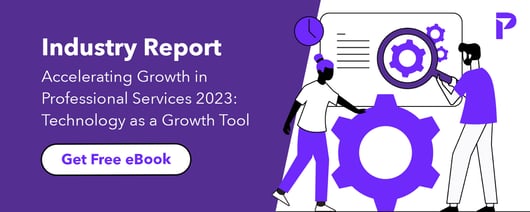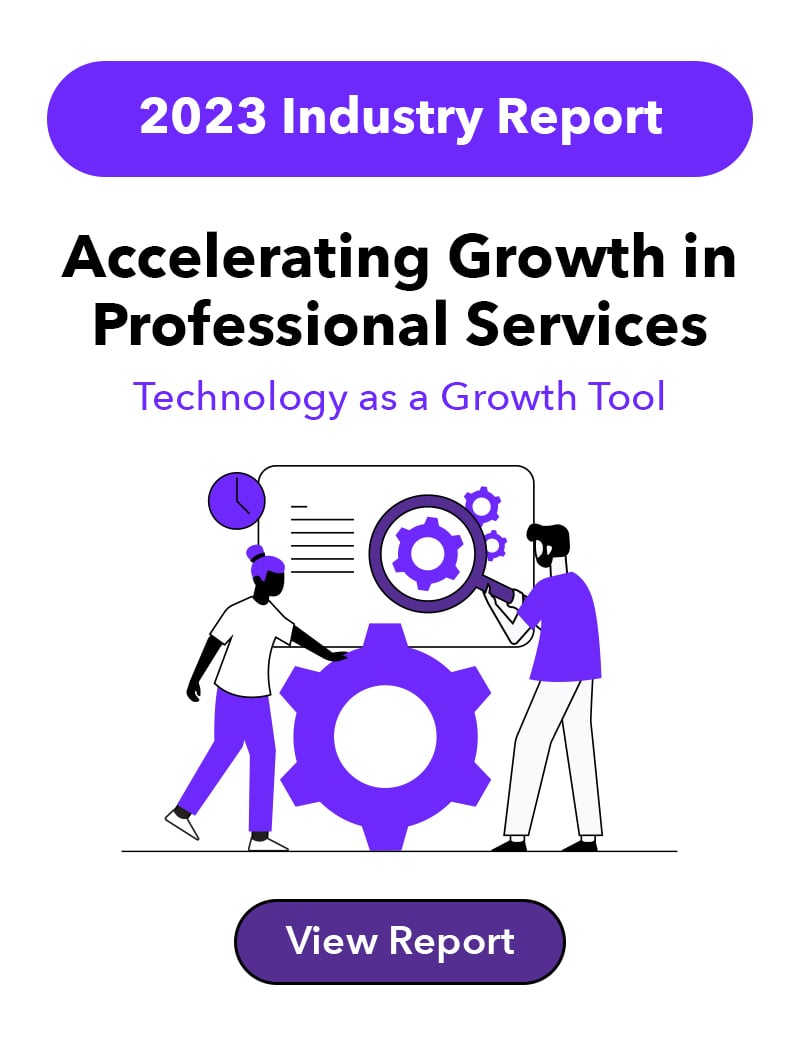A comprehensive digital transformation strategy is the only way to set your firm up for sustained growth. Even in the most “traditional” industries, the organizations that thrive are those that implement technology to optimize their processes.
In fact, 90% of C-level and senior leaders say their organizations have pursued at least one large-scale digital transformation in the past two years, according to McKinsey. This widespread focus and investment landed digital transformation on the list of top data technology trends for 2023.
Simply put, digital transformation helps organizations survive. A digital transformation strategy allows companies to quickly adapt to supply chain disruptions (imperative after the pandemic), time-to-market pressures and rapidly changing client expectations. Those who have successfully adopted strategies for digital transformation have seen 50% of the full revenue benefits that their recent transformations have achieved, according to a McKinsey survey.
But to figure out how to develop digital transformation strategies that work, first, you must understand what digital transformation is.
What does digital transformation mean?
Digital transformation is the integration of digital technology into all areas of a business, fundamentally changing how you operate and deliver value to customers, according to Enterprise Project.
But more than just integrating new technology, it’s about a cultural change to your organization. Digital transformation means what used to work in the past, may not work now. Implementing a strong digital transformation strategy requires experimentation, abandoning old business practices and possibly even failure before reaching a desired goal.
But the benefits are worth any trouble. In fact, according to McKinsey, professional services industries stand to benefit even more than others. Including:
- Harnessing technology to strategically differentiate your organization from competitors on more than price alone, including better customer engagement and innovation.
- The development of more innovative in-house tools, like AI and software, that are custom-fit to your needs.
- Intentionally focusing on bringing on a tech-savvy leadership team to drive a cultural change that is focused on integrating technology into all aspects of the organization.
Which departments does digital transformation affect?
Digital transformation will likely affect your entire firm. But like any good strategy, it needs to start from the top down.
CEOs and top leadership are responsible for imagining how their business will thrive in a digital age. Digital transformation is a key piece of the puzzle, so they need to make decisions on hiring the right people, motivating cultural shifts, potentially restructuring the organization, and a myriad of other components that fuel a digitally-forward organization.
Yet even as the strategy starts from the top, it will ultimately be carried out by the people in your firm. People, not technology, drive a successful digital transformation strategy. Learning how to build a digital transformation strategy includes preparing your entire team, from IT to sales to marketing and every other department that stands to benefit from digital transformation.
How to boost your digital transformation strategy
Boosting your digital transformation strategy can be done by focusing on improving the areas where your strategy will have the most impact–in other words, what generates ROI.
- Customer Experience
- Process Efficiency
- Company Culture
- Technology Infrastructure
- Data Management
- Employee Experience
Customer Experience
The modern customer is a digitally-driven customer. While you should not abandon traditional communication styles, you need to provide ways for your customers - current and prospective - to engage with your organization digitally.
This includes optimizing processes around:
- Problems or questions: Give them FAQ pages to reference, chatbots to converse with, an easy form to file a support ticket.
- Multi-channel experience: Create a streamlined and intuitive experience with your platform and/or website that minimizes points of frustration or confusion. Digital transformation also ensures that this experience is consistent across a variety of touch points and platforms.
- The customer journey: When you’re digitally savvy, you are able to soak in a lot more information about your customers. This empowers you to deliver the most helpful content in the most intuitive contexts, all the way from nurturing a prospective customer to empowering a long-time customer to make the most of your product or service.
From a big picture perspective, when you are able to automate tedious processes through an investment in digital transformation, your employees can concentrate more on client service, giving your clients a more bespoke experience.
Process Efficiency
Automating repetitive tasks also helps improve process efficiency. In our new industry report, more than 80% of professional services dealmakers said they spent 11-plus hours on non-strategic tasks every week. That means that over a quarter of teams’ weeks are spent on low-value tasks.
This makes implementing automation software an especially lucrative portion of a digital transformation strategy, and one where you feel the most immediate benefits.
Where you integrate automation in your business processes can vary depending on your organization and the most important and most tedious initiatives at hand. But some common strong contenders for automation include: onboarding, content creation, data entry/sorting, scheduling marketing/social media campaigns and project management.
One of the most effective places to implement automation in professional services is in marketing/business development activities. 45% of organizations report it takes a week to prepare a business contract. And the numbers are similar for pitches and proposals.
Anything you can do to cut this time down will benefit your team. There are a variety of tools out there that use templates and plugins to eliminate any nit-picky and tedious portions. Pitchly’s data-driven tombstone builder feature is used by many professional services firms to save them hours each week, eliminating the need to manually search data, copy/paste and play with formatting.
Company Culture
A good digital transformation strategy carves out a strong and cohesive company culture to support the initiatives it launches.
As digital technologies continue to impact business, it’s estimated that more than 1 billion people will need to be re-skilled by 2030. A company that embraces digital transformation, will take steps to make sure its employees are prepared for the new skills they inevitably will have to embrace.
This involves continuous training, highlighting champions of new technologies, and building the overall morale around becoming a digitally-savvy company.
A shift in company culture will also benefit teams in terms of recruiting and growth. When an organization puts digital transformation at the core of who they are, they will attract both clients and employees who share their passion, ultimately driving both innovation and growth.
Technology Infrastructure
The entire point of a digital transformation strategy is to change how you do business and upgrading your technology infrastructure is part of that strategy.
Technology infrastructure transformation is all about becoming better and more efficient at allocating budget and resources to new projects and markets, and making the cost of managing day-to-day infrastructure easier and cheaper, according to TechTarget.
Your infrastructure is essentially the backbone of all of the technological changes you’re making in your organization. Adding a ton of tech without orchestrating the way they will work together to support your key goals will lead to a lot of wasted money and frustration.
Data security and governance is another core consideration of this infrastructure. As you continuously add new and evolving technology to your stack, you want to ensure that all of your systems are connected in a way that is not only seamless, but also secure.
Storing your company’s data is possibly one of the most critical things to consider in terms of both security and ease of access. Your storage solution should empower any member of your team to access the exact data they need, when they need it. And should block access for anyone, internally or externally, who is not authorized. Database consolidation is perhaps one of the best ways to ensure that your data checks these boxes. This allows you to make better business decisions, amass better market and consumer intelligence, anticipate patterns of consumers and deliver smarter services.
Data Management
Right alongside of data consolidation is data management.
Data drives your business and the insights received from data management help you leverage your data to produce content and materials that effectively speak to your audience.
Data can completely transform the way that you do business, changing the way you effectively connect with prospective clients, make strategic business decisions to drive growth, and connect with your valued employees.
Having data management tools as part of your data transformation strategy, allows firms to use their data to the fullest.
According to Transforming Data With Intelligence, more than 80% of data that businesses generate goes unused. Data is expensive, so it’s in your best interest to squeeze as much value out of it that you can.
With data enablement tools like Pitchly, your data can help drive decisions about which clients to engage, where to place digital ads and how much time and money should go towards content assets.
Employee Experience
Just as improving customer experience should be a major focus for your digital transformation strategy, so should employee experience.
Reports show that 92% of business leaders are now identifying employee experience as a top priority, versus a meager 52% pre-2020. Part of improving the employee experience is adopting technology that changes how they do work, for the better.
Making employees repeatedly perform tedious tasks can inevitably make highly-skilled members feel like their time is wasted. In fact, these manual, time-consuming processes are likely the number one thing that’s killing your employee experience.
Choosing technology that allows employees to focus on work that makes a difference, instead of tedious tasks, can help your employees feel valued, which in turn benefits your company with happier, more productive employees.
Discover how top firms are using technology to get ahead in 2023
At the beginning of 2023, we conducted an industry-wide survey in marketing/business development teams in professionals services to uncover their top priorities and strategies for the year.
And we identified digital transformation as one of the top themes.
Want to dig into the insights and see the core challenges and blueprints for addressing digital transformation strategies? Download the report now.
 Mar 28, 2023
Mar 28, 2023





